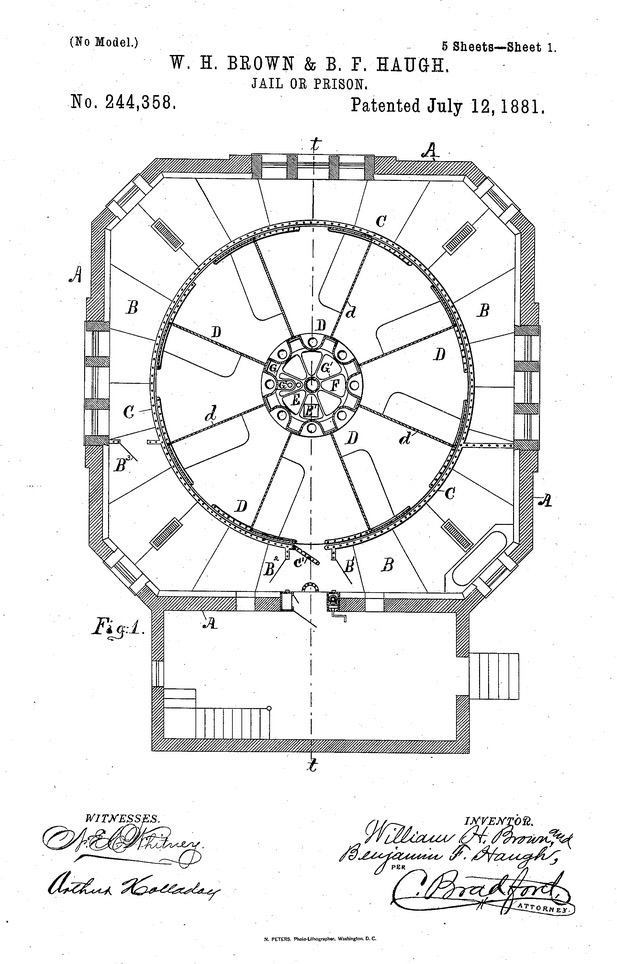#HTE
This Failed Design for a Rotating Jail Was Actually Built. Here’s How it Worked
Here’s a great example of an architect becoming enamored of a new, flashy concept while failing to consider real-world behaviors. In 1881, architect William H. Brown patented the following design:


That’s the plan and elevation views of a rotating jail. The circle contains eight pie-shaped jail cells and there’s only one door. The cell rotunda rests on ball bearings, and a guard rotates a manual hand crank to spin the entire structure.

The supposed benefit of this design was that only one guard would need to be hired to watch the single door. But the downsides are manifold. Never mind the increased construction costs; in an emergency, say a fire or a flood, the one guard must stand there and painstakingly rotate each prisoner out. The larger, more gruesome problem is that the lone guard has no way to see what’s going on in the cells on the other side of the circle. If, say, a drunk arrestee has passed out with his arms sticking out of the bars, well, guess who loses those arms when his cell rotates and lines up with an immovable wall.
Amazingly, a dozen or so versions of Brown’s design were actually constructed, and though all were decommissioned as the design’s demerits came to light, some are even still standing. YouTuber Tom Scott visited the Rotary Jail Museum in Crawfordsville, Indiana, and got a demonstration of how it worked:
http://www.core77.com/posts/69015/This-Failed-Design-for-a-Rotating-Jail-Was-Actually-Built-Heres-How-it-Worked
